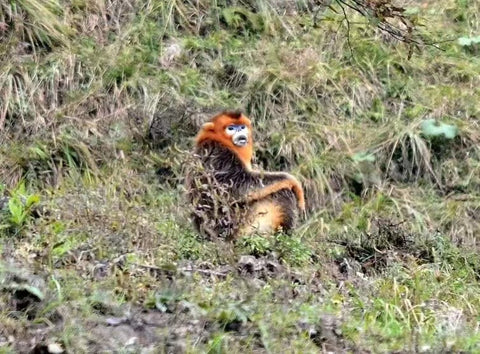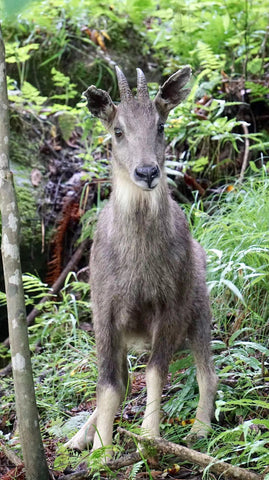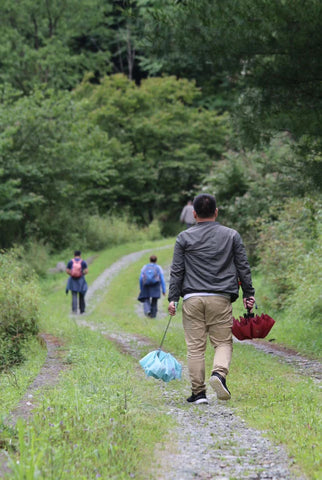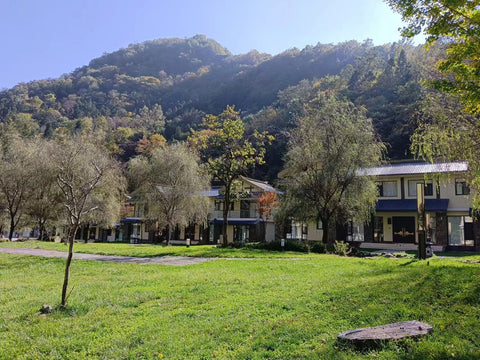It is very excited to introduce this hidden spot - Tangjiahe Nature Reserve to all of you! It is known as the wild pandas habitat in Sichuan. A retreat in summer, reflecting different beauty all over the seasons. Here you can see wild China, gorgeous species, culture, history, and landscape.
Special geographical conditions, up to 96.5% vegetation coverage and other factors have created a unique ecological environment in Tangjiahe, more than 3,700 species of animals and plants thrive here. Within walking distance, we can see nearly 100 species of animals and birds.
In the hearts of animal lovers, Tangjiahe is the only holy place for animal watching with such a high variety of wild animals, a high distribution density, and a high rate of encountering.
We invite you from the hustle and bustle of the city into the comfortable jungle, into the paradise of wild animals, listen to the murmuring water, see the free creatures, and view the beautiful scenery!


Set off from Chengdu, it takes about 1.5 hours by high-speed train and 2 hours drive from the Qingchuan railway station to the reserve. So we would recommend 3-5 days tour. We usually hire a local ranger to increase the odds of spotting wildlife.
Winter is the best time. They are very active in cold. Animals living in high altitudes will migrate vertically to relatively lower altitudes and gather near valleys to access water and food. Therefore, large wild mammals that are rarely seen will be observed around you like neighbors.
Go and meet the cute Sichuan takin, the agile little muntjac, the agile tufted deer, the small yellow-throated marten, the Tibetan macaque who likes to "robbery on the road", as well as the Chinese serow, porcupine, wild boar, Capricornis milneedwardsii and etc.
Sichuan takin will descend from high altitude to the 2,000-meter forest area to look for young branches and leaves for the winter. Walking on a mountain path, you may encounter a takin at the next turn.











Tangjiahe is also a great place for bird watching, like Red-billed Leiothrix, Collared owlet, Golden Pheasant, White-browed Laughingthrush, Tawny Fish Owl, Wallcreeper, Buteos, Golden Eagle, Tawny Owl,Green shrike-babbler,White's Thrush,Blue whistling thrush,Little bunting,Slaty-blue flycatcher, etc.







Tangjiahe Hotel has a very good location and it's the only property in the reserve, very convenient.



Qingxi Ancient Town

Q: What is the local temperature like?
A: The temperature in Guangyuan downtown area in February is 2℃~12℃ and 1℃~10℃ in Tangjiahe Reserve. Outdoor gears: commonly used clothing in winter like outdoor padded jacket, outdoor down jacket, outdoor storm jacket, hoodie, fleece jacket, storm pants, thermal pants, and hiking shoes, visor, sunglasses, hiking poles, etc.
Q: How long is the drive between each destination?
A: It takes 2 hours to drive from Qingchuan Railway Station to Qingxi Ancient Town, and another 15minutes to Tangjiahe Nature Reserve. The sightseeing bus of the Tangjiahe Nature Reserve takes no more than 30 minutes. Please prepare some medicine in advance if you suffer from motion sickness.
Q: How many kilometers is the hiking for each day? Will it be difficult?
A: The hiking is 7-10 kilometers for each day, ascending 100 - 200 meters, suitable for most of the travelers. Just be careful not to slip.
Q: What items are needed for wildlife observation and any recommendations?
A: You are recommended to bring telescopes (bird watching), flashlights (night viewing), and camera equipment (nature recording).
Q: Can I see wild animals in Tangjiahe?
A: Yes, the encounter rate of animals and birds in Tangjiahe is very high. Follow the tour guide and the reserve ranger to watch wild animals and birds in their natural state. You need to get up early, follow the instructions, and keep a safe distance from wild animals. Feeding wild animals and going out alone at night are not allowed.
